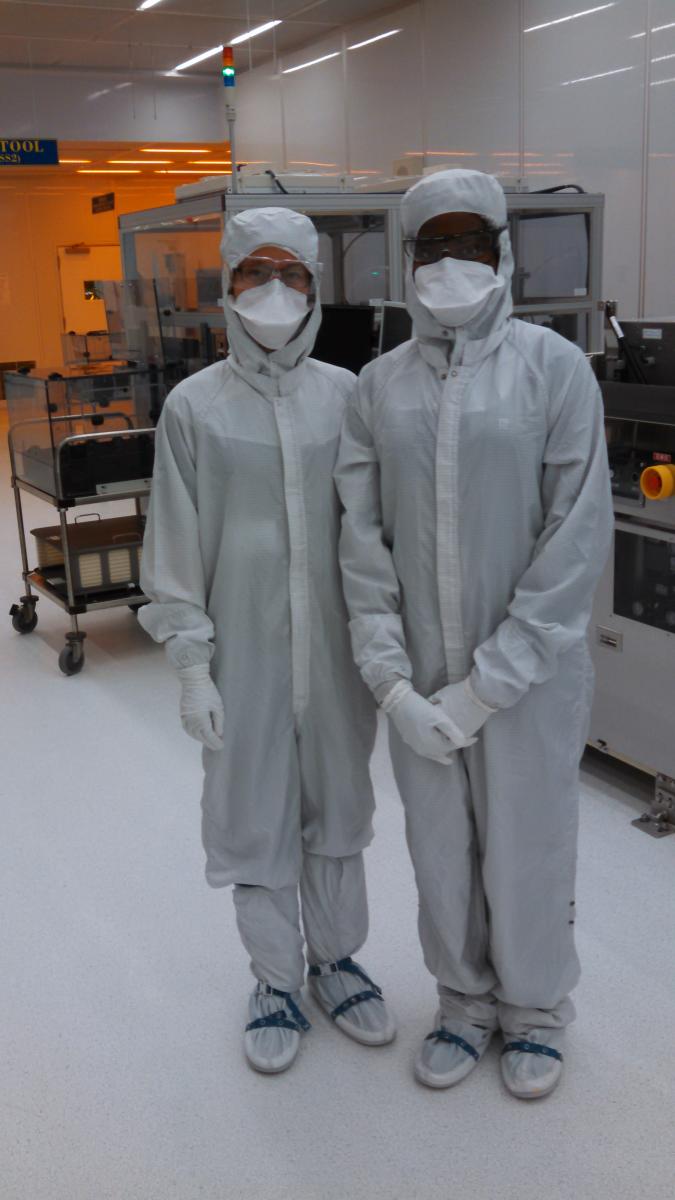EDF Climate Corps fellow | August 5, 2014
By: Nkiruka Avila

Energy efficiency is an essential part of climate change mitigation, which is my primary motivation for becoming an Environmental Defense Fund Climate Corps fellow. My goal is to find energy and water savings at my host organization PerkinElmer in Santa Clara, California. PerkinElmer designs and manufactures medical imaging technology that tackles the world’s most critical health related challenges.
The facility I am working in this summer has a class 100 clean room (we call it “the Fab”) where 50x50 cm digital flat panel x-ray detectors are fabricated. Any impurity in the Fab could cause defects in the panels. PerkinElmer’s fabrication process is unique because each of the panels produced is kept as a whole unit and is not cut into smaller pieces. This makes it critical to produce flawless panels every time as a defect could ruin the whole panel.
Recently, I took a tour of the Fab with my supervisor, Joe Batdorf, and my EDF Engagement Manager, Serena Mau. The tour of the Fab was fascinating and revealed just how energy intensive the fabrication process is. I was impressed to see that several energy efficiency projects, headed by my supervisor, had already been implemented at the facility. Energy efficiency is not a foreign idea to PerkinElmer, and they have invested in several energy saving measures over the years. For example, PerkinElmer completed a reheat coil optimization project and replaced two inefficient boilers with efficient condensing boilers saving almost 70,000 therms of natural gas annually and eliminating over 300 tons of carbon emissions.
Despite the implementation of several energy efficiency measures, there is still room for more. I am working on proposing further energy efficient lighting, computer power management software and other energy saving measures for the air compressors and fume scrubbers in the facility. Silicon Valley Power offers great resources like lighting audits to help identify potential rebates. I am also investigating water conservation measures for a reverse osmosis system and two fume scrubbers that have the potential to save 3 million gallons of water annually. With California’s drought, these water conservation measures are direly needed.
Being an EDF Climate Corps fellow has given me the opportunity to learn about energy efficiency solutions and their financial and political obstacles. I am learning about the many incentives offered by the state and local governments in California to promote energy sustainability. EDF Climate Corps has also opened up to me a vast network of professionals and students working towards a more sustainable future. The experience is invaluable and substantiates my intuition that my work is headed in the right direction.
About EDF Climate Corps
EDF Climate Corps (edfclimatecorps.org) taps the talents of tomorrow’s leaders to save energy, money and the environment by placing specially trained EDF fellows in companies, cities and universities as dedicated energy problem solvers. Working with hundreds of leading organizations, EDF Climate Corps has uncovered nearly $1.3 billion in energy savings. For more information, visit edfclimatecorps.org. Read our blog at edfclimatecorps.org/blog. Follow us on Twitter at twitter.com/edfbiz and on Facebook at facebook.com/EDFClimateCorps.
About EDF Climate Corps
EDF Climate Corps (edfclimatecorps.org) taps the talents of tomorrow’s leaders to save energy, money and the environment by placing specially trained EDF fellows in companies, cities and universities as dedicated energy problem solvers. Working with hundreds of leading organizations, EDF Climate Corps has uncovered nearly $1.3 billion in energy savings. For more information, visit edfclimatecorps.org. Read our blog at edfclimatecorps.org/blog. Follow us on Twitter at twitter.com/edfbiz and on Facebook at facebook.com/EDFClimateCorps.